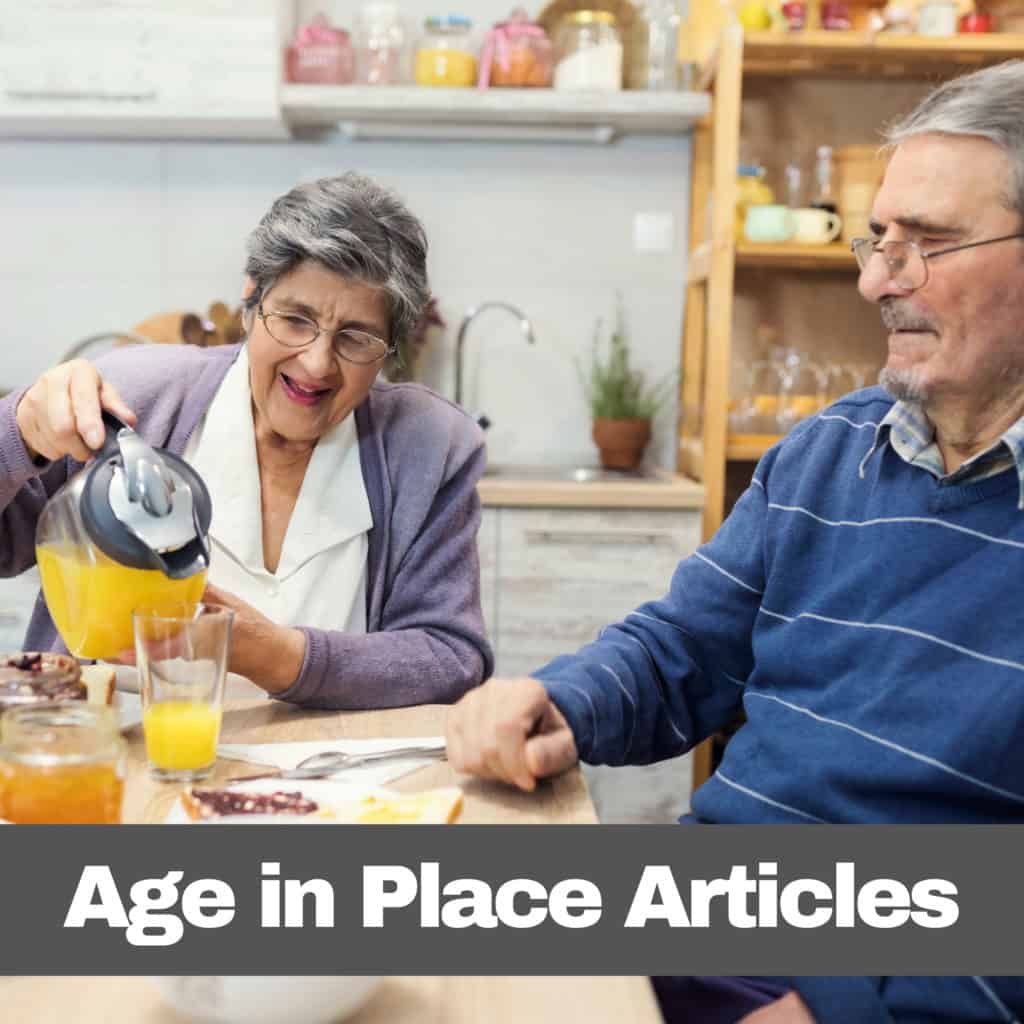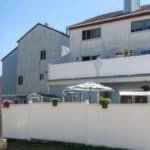These 10 easy age in place tips can be put into place long before you need them. These small changes to your home can promote safety and ease of getting around. Active aging is about being involved early in decisions to improve your safety and well-being later in life. Take a look at these 10 ideas and see which ones you can implement in the coming weeks to make your home more suited to aging in place.
10 Easy Age in Place Tips for a Safer Home
1. Remove all scatter rugs
All scatter rugs can easily become a trip hazard. They are hard for a walker or wheelchair to move on top of. If you must have a small rug, such as in your bathroom – make sure the rug has a slip resistant, and anti-skid backing on it.
2. Use end tables instead of a coffee table
With a coffee table you are bending forward and low to put a drink on it. This puts you at risk of a fall, often while holding a hot beverage. If you use end tables beside all your seating, you can easily place drinks down without bending over or putting yourself at risk of a fall. Coffee tables also make an obstruction for walkers and often become a trip hazards themselves by catching a leg on them. Coffee tables are generally too low for those with low vision to easily see. Removal of coffee tables creates a more open and easy to move around space. Adding additional end tables means everyone who is seated has a spot to put a drink, a book or anything else they need to set down.
3. Upgrade your lighting
This can be as simple as replacing light bulbs with bright white light bulbs instead of ‘soft’ or ‘frosted’ lighting in any light fixtures. To ensure good vision, make sure to install the maximum strength a fixture can handle but never place too high of voltage in a light fixture. Always replace bulbs immediately as they burn out. If possible, add lighting to closets and pantry cupboards to improve visibility.
4. Ensure your seating has arm rests that are sturdy
Think about dining room chairs, living room seating and even the chairs at your desk or in your bedroom for getting dressed. An armrest assists you to stand when leg strength is compromised. Arm rests also help you balance when changing positions.
5. Use a small table at your entrance
At your front door (or the door you most commonly use) place a small table to place keys or put down packages when you first come in, so you aren’t bending to the floor to set things down. Many falls happen when we are rushed, or we have full arms. Make your entrance an easy space to use, ideally with seating for changing footwear.
6. Ensure large address house numbers
Ensure your house number is large, easily readable and lighted for easy sight by first responders. That last thing you want in an emergency is for help to have trouble finding you. Remember to turn on front lights to ensure your house number is lit every night or install a light sensor that automatically comes on as it gets dark.
7. Use lever style faucet handles
Sink faucets should be a lever style rather than a knob style. A lever style faucet will work with different grabbers and aids that you can use if you are lacking hand strength. Knob style facets are traditionally very hard to use with aids to help with hand movements.
8. Use a programable thermostat
Using a programmable thermostat means you can choose one with larger letters and numbers that is easy to read. A programmable thermostat often stops you from walking up unnecessarily in the middle of the night to adjust heating and also prevents cold air from causing stiff joints.
9. Use large deadbolt locks
Large deadbolts as they are often the easiest to turn or set. Small buttons that need to be pushed or turned can be hard to tell if they are actually locked. Make sure locks do lock easily and are not sticking or require a lot of jiggling to open.
10. Use a one handed toilet paper holder
I know it seems silly, but you’d be surprised the number of falls when trying to put on a new toilet paper roll. Instead choose a design where you can easily slip on a roll with one hand.
Sometimes just a simple re-arranging of furniture can make our home more safe as we age. Simple upgrades to lighting or faucets can often be done well in advance of needing those modifications to the home. These age in place tips are designed to help you be prepared for aging well. After all, that is what active aging is all about!
If you want to learn more about how to prepare your home for aging in place, I am happy to complete an Aging in Place Consultation where I review over 150 elements in your home. An Age In Place Consultation assists you to prepare your home to be your safe haven. You’ll also have peace of mind knowing what limitations your home may have. It is all about having the knowledge you need to age in place on your terms.





